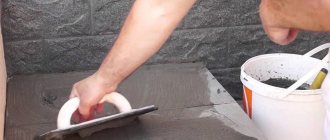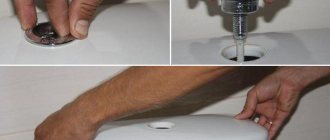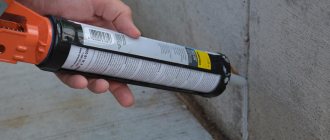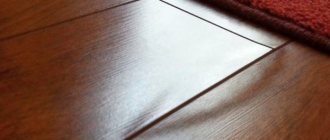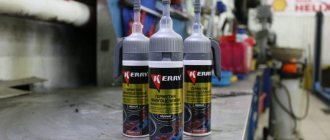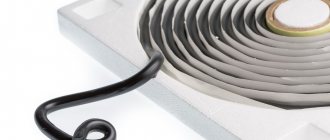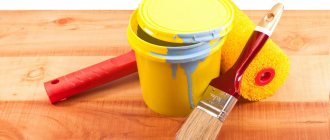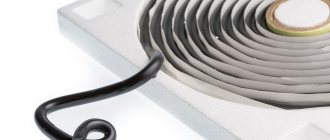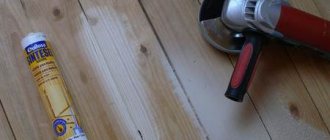What should you consider when choosing?
There are many types of tile grout. When choosing, you should pay attention to the following characteristics:
- water resistance;
- degree of shrinkage;
- level of adhesion to the base;
- service life;
- color.
The material must be resistant to water. Some types of professional grout can be used for swimming pools. With a high degree of shrinkage, cracks may form, which in turn will shorten the service life of the tile covering.
It is important that the degree of adhesion of materials is as high as possible. The packaging also indicates the maximum service life of the grout. It is best to give preference to compounds that can withstand both high and low temperatures. The grouting agent should repel water.
When choosing, it is important to pay attention to the color scheme of the grout material. Color is needed to organically complement the tiles.
Grout colors
In most cases, manufacturers rely on basic shades. The most commonly used grout colors are:
- white;
- black;
- green;
- dark brown;
- blue.
There are transparent silicone grouts with antifungal properties. If you don’t have a suitable tone, you can purchase several different colors and mix them.
To get the most uniform surface possible, the grout should match the color of the tile.
You can create a more unusual interior using contrasting grout.
For more information about grout colors, read the article - How to choose grout for tiles by color: secrets that only a few know
The best manufacturers
There are both domestic and foreign manufacturers of tile grout on the market. The quality of such materials is almost the same, the difference lies in the price of the products. Well-known manufacturers:
- Plitonite;
- Ceresit;
- Atlas.
Plitonite
Plitonit is a Russian-German manufacturer. Grouts from this company are excellent for sealing joints from 2 to 6 mm. There is a special grout material for floor tiles.
It is characterized by greater fluidity, which allows you to quickly fill seams without the formation of voids.
Grouts from the Plitonit company contain solid components that make the material more wear-resistant and resistant to aggressive environments.
The company has also developed special grouts that have increased waterproofing properties. Due to the presence of biocidal additives, grouts repel dirt well. They are suitable for filling joints from 2 to 20 mm.
Ceresit
Ceresit products are very popular. Such grouts tolerate high humidity and temperature changes well.
They have water-repellent and antifungal properties.
Some types of grout from Ceresit can be used for outdoor work, as they tolerate frost well.
The products of this company combine high quality and affordable prices.
Atlas
Atlas is a Polish production that produces 2 types of grout mixtures. The first type is intended for grouting joints of 1-6 mm, and the second for 4-16 mm. The material has good adhesion and withstands mechanical stress.
Atlas grouts are suitable for use in damp environments. The color range is quite wide.
The grouting material from a Polish manufacturer is highly elastic and can withstand temperature changes.
Can be used both for interior spaces and facades.
Types of sealants
All sealants can be divided into several groups. They are classified by composition (type of base), tendency to deformation (elastic, forming a hard seam) and by type of work (for internal and external).
| Sealant | Characteristics | Advantages | Flaws |
| Silicone sealants | They are divided into neutral and acidic, “acetic” with a pungent odor (disappears after drying). Acetic agents cannot be used to seal metal, concrete, marble, and natural stone (corrosion of the material is possible). Neutral are non-toxic, they can be used for sealing non-porous substrates (metal, aluminum, glass, tiles) and porous substrates of concrete, brick, plaster, etc. using a special primer. | Sanitary sealant is suitable for use in wet areas (prevents the formation of mold and mildew). Elastic. Resistant to ultraviolet radiation and temperatures from -50 to +150 degrees. Service life up to 10 years. Available in different colors. | Cannot be painted. It does not adhere to itself; if a seam is damaged, it cannot be repaired; fresh sealant cannot be applied over an already hardened one. Poor adhesion to foam rubber, PVC, polycarbonate. Different adhesion to porous and non-porous substrates. |
| Acrylic sealants | One-component. Service life up to 2 years (for external structures) or up to 10 years (for internal ones). | Vapor permeable, with good adhesion to almost all materials, inexpensive. Excellent coloring and completely non-toxic. | They cannot stand the cold and lose elasticity. |
| Polyurethane sealants | In low-rise construction, single-component ones are usually used. Service life: indoors up to 30 years, for external structures – up to 15 years. | Very flexible and durable, with excellent adhesion to most building materials. High water resistance, withstands temperatures from -60 to +80 degrees, resistant to corrosion and weak solutions of alkalis and salts. Can be painted with all types of paints. | It quickly loses its properties when the package is opened. Does not withstand long-term exposure to temperatures above +120 degrees. |
| Bitumen sealants | Petroleum product. Mainly used for sealing bitumen roofing waterproofing. | Good adhesion to most materials. Protects metal from corrosion. Resistant to UV rays and humidity. | Afraid of high temperatures. Absorbs into porous materials and can leave greasy stains around the sealing area. It cannot be painted or varnished. Toxic. Not used for interior work. |
| Hybrid sealants are silane-modified polymers, or SMPs. | Widely used in construction, mechanical engineering and other areas. | UV resistant, elastic. High adhesion to most surfaces, can be painted with any paint. They serve for a long time without loss of performance, are convenient and easy to apply, and are environmentally friendly. | High cost, not resistant to the formation of fungus and mold (cannot be used as a sanitary sealant) |
Preparatory work
Before applying tile grout, it is necessary to carry out preparatory work. It is advisable to grout the seams on the day of installation of the tiles, since over time it will be very difficult to remove the glue that has dried in the seams.
To remove excess glue and not damage the glaze on the tile, you can use a knife blade or a special scraper that has an abrasive coating. First, all vertical seams are processed, and then horizontal ones.
Silicone grout can only be placed in clean and dry joints, otherwise it will not be wear-resistant.
How to remove silicone?
To wash silicone from a stained surface, you can use the following means at hand:
Laundry soap . Using the product you can get rid of greasy traces of material on tiles or plastic. To do this, prepare a soap solution from a spoon of grated soap and a glass of warm water. Treat the prepared stain with a sponge and scrub a little. Then rinse off the foam with running water.
Dish detergent . This cleaner dissolves greasy marks well. Dilute five drops of the product and half a glass of water in a small container. Apply the cleaner to the sealant stains and scrub with a washcloth. Complete the cleaning procedure by removing foam with water.
Kitchen salt . Wrap a spoonful of rock salt in a bandage and soak the bag in warm water. Use the prepared tool to wipe away any dirt on the surface. Then wash off any greasy silicone residue with dishwashing detergent or laundry soap. It is recommended to use salt on a surface that is resistant to mechanical damage.
Special solvents . Surface cleaners for building materials. After all, not all cleaning products prepared at home help get rid of traces of silicone. Using special products, you can restore the surface to its original shine and cleanliness. It is recommended to buy solvents along with building materials.
Tool
To apply grout, it is best to use a special rubber spatula. It allows you not only to increase the speed of finishing, but also to fill even the smallest seams. This tool does not leave excess grout on the wall.
If you don't have a rubber spatula, you can use a grater. To do this, take sandpaper and round one of its corners. This application tool does not always fill the seam completely, so sometimes you will need to adjust the angles of your fingers.
You need to wear rubber gloves when working, as grout that gets on your skin can ruin it.
To perform grouting work, you will also need a sponge, a clean and dry rag and a bucket of water.
Application of silicone grout
The advantage of applying silicone grout is that it is sold ready-made in a tube. The composition should be applied only to grease-free and dry seams.
Algorithm for performing the work:
- The spout from the tube is cut so as to obtain the required seam thickness.
- The tube is inserted into a special construction gun.
- The sealant must be squeezed out as evenly as possible.
- All seams will need to be leveled using a rubber spatula, or this can be done with a wet finger.
You can use masking tape to grout the seams. It is not recommended to remove excess grout material immediately, as the sealant will be smeared on the tile. It is simply removed after hardening.
If there is a need to remove fresh grout, then you can use alcohol or acetone.
We also recommend watching - Grouting tiles: subtleties of selection and application
We use masking tape
Apply masking tape on both sides of the joint (professionals recommend using Eurosel, Tesa) and apply silicone. This method is also called dry grouting because the tiles are not wetted. If you accidentally missed any area, you can add more grout.
Using masking tape to create an even seam
The advantage of this method is that the surface around the seam remains clean. This is the best option for beginners as there is an opportunity to correct mistakes.
Useful tips
When choosing a grout tone, you need to think about the color perception of the tile. Dark seams will help emphasize the geometric pattern and contrast of the finishing material.
This technique is recommended for small tiles or mosaics.
In order for the ceramic coating to look holistic, the grout should be chosen to match the tile.
The width of the grout joint depends on personal preference. Narrow joints visually suppress the tiles. For square tiles, the optimal joint size is 3 mm. If the shape is irregular, the seams may be larger, but not more than 12 mm.
The longer the width of the grout joint, the greater the risk that it may crack.
Seams that are too narrow are difficult to fill.
The advantage of using silicone grout is that it is suitable for sealing joints in the most inconvenient places. Grouting work should be performed when the room is dry and the air temperature is between 5 and 45 degrees.
It is important that there is good ventilation in the room, since when the silicone composition hardens, it releases acetic acid.
It has a negative effect on the skin and the condition of the mucous membranes.
Silicone grout is great for rooms with high humidity: bathroom, swimming pool, kitchen and toilet. Some types are suitable for outdoor use. Such compositions have antifungal and dirt-repellent properties.
It is important to apply silicone grout to the prepared seams; only in this case will they perform their functions.
Removing silicone from bathtubs or tiles
The procedure for removing silicone sealant at joints in the bathroom is an unpleasant and difficult process. You will need to prepare the following available tools: a knife (blade), a screwdriver, a pumice stone and a soft cloth. Try to pick out the silicone in an accessible place and cut along the entire seam. Then use a pumice stone or salt wrapped in cheesecloth to rub the joints to remove any remaining caulk. At the end of the procedure, apply vinegar or alcohol with a cloth and rub a little.
If, after renovation work in the bathroom, you need to wash off traces of silicone and carry out wet cleaning, then use the following cleaners:
Soap solution . You can prepare the product from laundry soap or dishwashing detergent. Apply the solution to the tiles using a sponge and lightly scrub the stained surface. Then wash off traces of foam with water and dry the tiles with a terry cloth.
Vinegar and alcohol . Before using any of these products, you need to find out what the sealant is made of. If the building material is made on the basis of acetic acid, then it is better to use vinegar to remove it. When the silicone contains alcohol, you can wipe off the stained surface with ethyl alcohol. To clean the surface from the sealant, apply the specified preparation to the dirty area and leave for thirty minutes to soften the building material. Then cut off the silicone layer with a knife or other sharp object and wipe the surface with a soft cloth. If necessary, repeat the cleaning procedure again.

